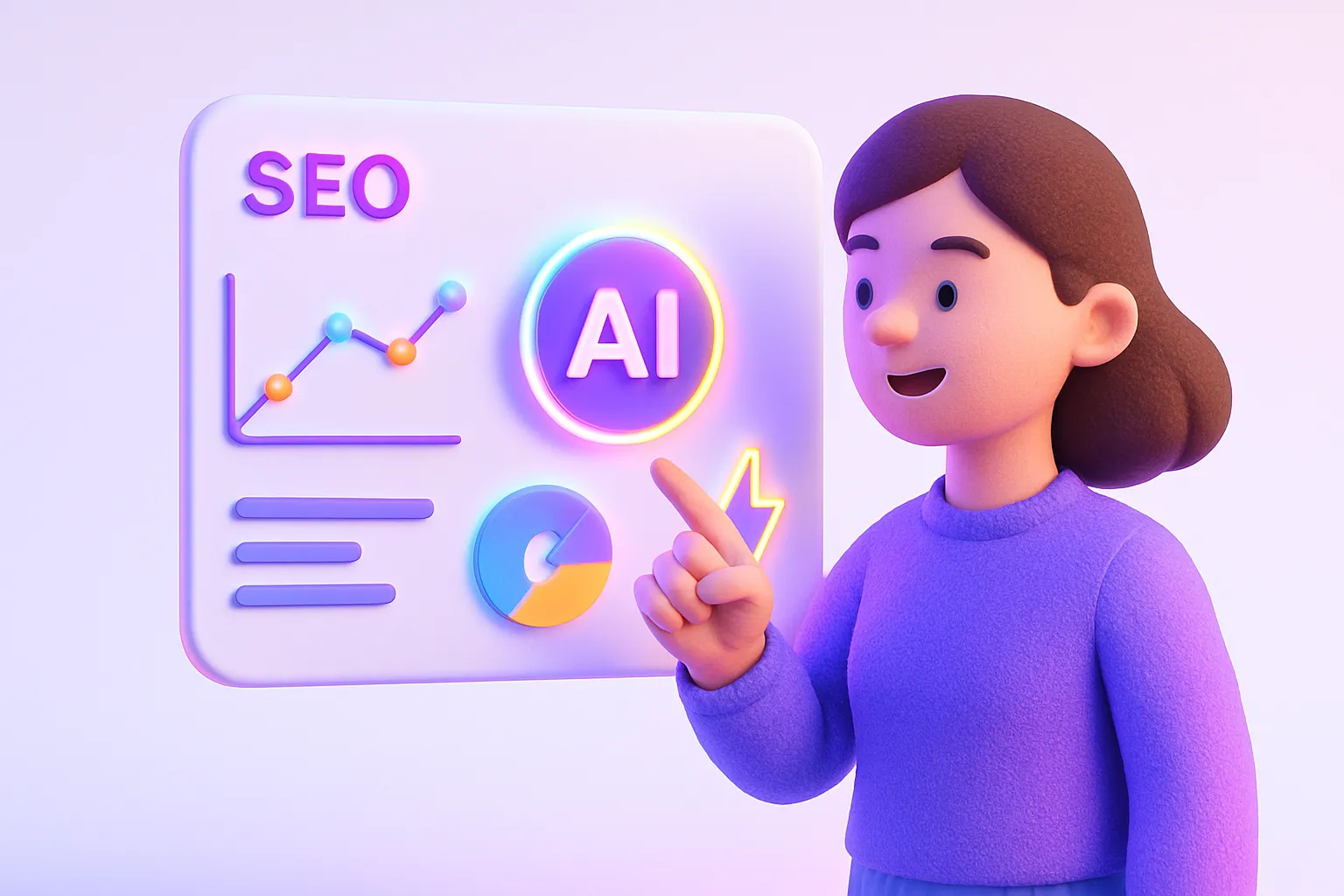AI-Powered SEO Automation: Tools and Techniques for 2025

Why AI-first workflows are taking over SEO
Most of the day-to-day jobs in SEO feel like data entry: exporting keywords, regrouping them, writing 60-character titles, and pasting them into a CMS. Modern AI tools now do those steps faster and, in many cases, more accurately than a human juggling spreadsheets at 11 p.m. By 2025, skipping AI means giving competitors a head start on every SERP refresh.
Top AI tools you’ll actually use in 2025
- Surfer SEO – Real-time content audits that benchmark against 500+ on-page factors, then score your draft as you write. source
- Jasper AI – Long-form copy generation with built-in brand voice profiles. Great for first drafts and quick ad variants. source
- Ahrefs AI Insights – Predictive backlink opportunities and risk alerts that flag toxic domains before outreach starts. source
- SEMRush AI Suite – Live keyword suggestions that auto-group by intent and seasonality. source
- Conbase.ai – A no-code pipeline that turns any CSV into thousands of optimized titles, meta descriptions, or entire product pages in one run. Upload, set a prompt, hit start. Perfect for bulk work across multilingual shops.
How to put AI in charge of keyword research
Keyword research used to mean hours inside a single dashboard. Today you can:
- Drop a seed term into SEMRush AI Suite and pull a list of suggestions scored by traffic potential and conversion likelihood.
- Feed that list into a clustering model to group topics by search intent, informational, commercial, or transactional, so your content map writes itself.
- Use ChatGPT or Jasper to draft page briefs that outline headings, key questions, and recommended internal links.
Because AI reads live SERP data, it spots up-and-coming phrases long before keyword difficulty tools catch up, giving you a genuine first-mover edge.
Quick prompt for cluster mapping
Paste your keyword list and ask: “Group these into themes based on user intent and funnel stage. Return a table with Theme, Primary Keyword, Supporting Keywords.” You’ll save hours and get a content calendar in seconds.
AI-driven content optimization that moves rankings
Once the brief is set, Surfer SEO and similar tools scan the top results, flag word count, heading structure, NLP terms, and even image alt text you’re missing. The workflow:
- Write or generate a draft.
- Run it through Surfer’s content editor until you hit a target score of 70 or better.
- Export straight to your CMS, already optimized.
The result: consistent quality without manual checklists. According to AIApps research, brands using AI editors cut on-page optimization time by 60 percent.
Don’t forget the snippet
Meta titles and descriptions are still the first touchpoint. Instead of writing them line by line, lean on generators like Conbase.ai or built-in GPT functions to create, test, and localize thousands at once. Our own guide on AI-Powered Meta Title and Description Generation breaks down the exact steps.
Future trends you should prep for now
- Chatbot SERPs – Users are asking Bard, Claude, and ChatGPT follow-ups instead of clicking results. Monitoring how your brand surfaces inside these answers will become as important as traditional rankings. source
- Predictive link building – Ahrefs AI Insights is already modeling which domains will gain authority in the next six months. Expect outreach strategies to turn predictive, not reactive.
- Real-time algorithm adaptation – Tools will adjust on-page recommendations the moment Google rolls out a core update, slashing the lag between change and recovery.
Related reading: Automating product descriptions at scale
If you juggle thousands of SKUs, check out our deep dive on leveraging AI to automate e-commerce product descriptions. It outlines how Conbase.ai turns a plain CSV into fully optimized listings without extra code.
Key takeaways for 2025
- AI isn’t a nice-to-have; it’s now the baseline for competitive SEO.
- Pick tools that integrate into your existing stack rather than adding new dashboards to babysit.
- Keep humans in the loop for brand voice, final QA, and creativity, let machines handle the grunt work.
- Stay alert to chatbot SERPs and predictive analytics; they’ll shape the next generation of ranking factors.
Next step
Test one AI workflow this week, whether it’s keyword clustering or meta tag generation. Measure the time saved and scale from there. Your 2025 self will thank you.



